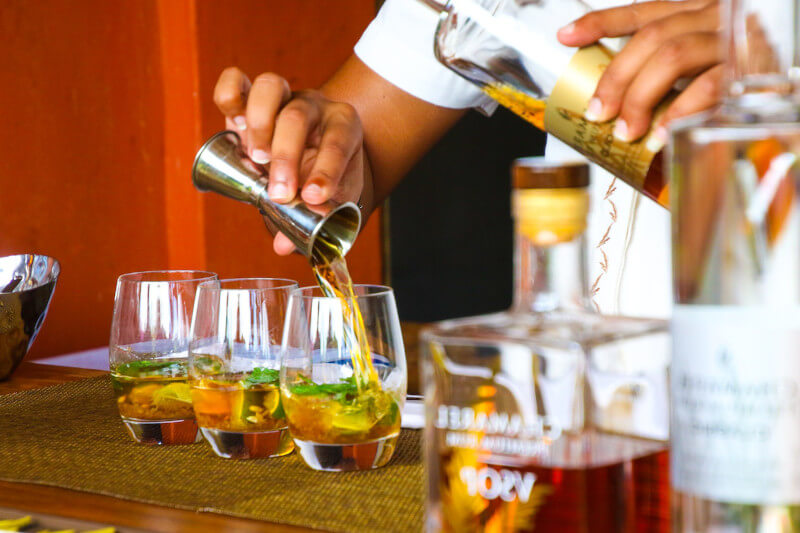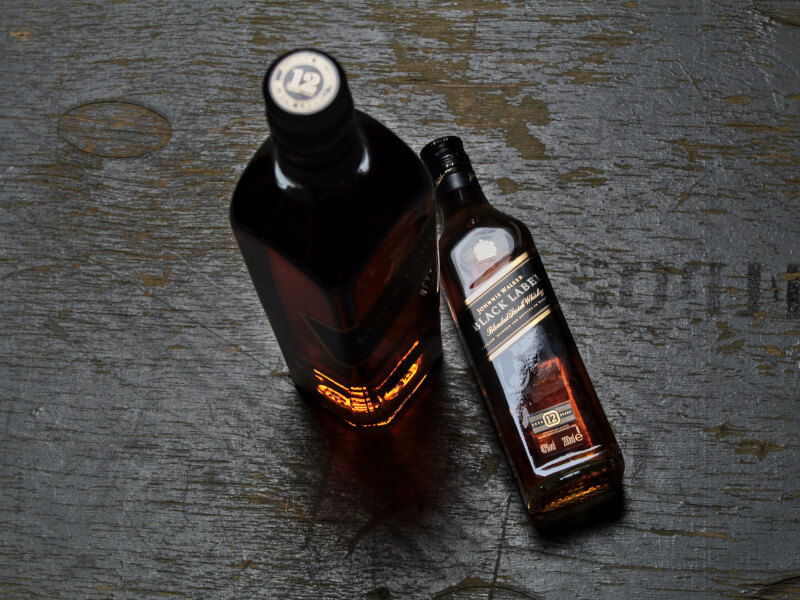There are numerous whiskies to choose from, so it’s a good idea to sample a wide range of them. The only way to discover the best whiskies in the world is to try them all, refine your tastes, and practice your palette. There’s a drink for every taste, whether you want an old-fashioned or prefer your whiskey neat. But don’t worry if you don’t have the opportunity to sample whiskey from every distillery in the globe; we’ve got you covered. To give you a taste of the variety whiskey has to offer, we have developed a list of whiskies that you simply must try. Discover which whiskies will suit your taste and which you should avoid expanding your horizons by reading this.
How Does Whiskey Get Its Unique Taste?
Perhaps unexpectedly, the oak casks are mostly responsible for giving whiskey its signature rich complexity in flavor. Whiskey is a clear, crisp liquid before it is aged in barrels, but it becomes smooth and acquires its signature vanilla, caramel, smoke, and leather flavors during this process.
Distillers can experiment with different flavors by storing their spirits in previously used casks. To add fruitiness to whiskey, for instance, you can age it in used sherry casks. The use of charred oak casks imparts a smokier, more robust flavor to the final product. Your true window of opportunity is the aging process.
If you’re just starting to experiment with whiskey, it’s important to realize that if you don’t like the flavor, it’s probably because you don’t like the qualities of the wood in which it was aged. Fortunately, there is a wide range of possibilities to explore, so you may find something satisfying regardless of your budget.
Whiskey Tasting Guide

First, we think it would be unfair to assume you have no prior knowledge of whiskey tasting to discuss the best whiskies you should try. The whiskey-tasting method isn’t crucial, but it might help you pick up nuances in the spirit’s flavor that you might otherwise miss.
Take Notice of the Whiskey
Taking a look at your whiskey is the first step in tasting it. However, proper observation requires the use of the appropriate glass. A rocks glass would do just well for a whiskey tasting, but the Glencairn style glass with the bulbous bottom and tapered lip is recommended.
Then, examine the whiskey in your glass as a starting point. Because of this, you should drink whiskey out of a transparent glass. The aging procedure imparts whiskey with its characteristic flavor and deep amber hue. A whiskey’s flavor and scent will be more robust the darker it is.
Smell The Whiskey
You should smell the whiskey before you drink it. Allowing the aromas of the whiskey to fill your nostrils before drinking can prime your taste receptors to take in the full flavor of the spirit.
To accomplish this, place your nose towards the opening of the glass and take a few slow, deep breaths through it. If you take a huge sniff right out of the glass, you’ll get a lungful of alcohol vapor, which will kill your sense of smell and leave you feeling… not great.
Whiskey is not wine, so don’t treat it like one and swirl it around before taking a whiff. Swirling the drink does release the aroma, but it also releases more vapors of alcohol, which is why it’s fine for wines with lower alcohol by volume (ABV) than whiskey, but not so great.
Take Little Sips
The last and most important stage in whiskey tasting is to sip it slowly and carefully. Keep in mind that there is a distinction between tasting whiskey and downing it, even though the latter is a lot less fun. To fully appreciate the drink’s flavor, start with a tiny sip and savor it in your mouth before letting it go down. Your tongue and mouth will get used to the alcohol as you sip, allowing you to gradually increase your sip size.
How to Taste Whiskey Like a Pro
First, we’d want to give you a few final pro suggestions to taste your whiskey like a pro before we plunge into the exquisite whiskies you’ll have to drink at some point to properly enjoy all that whiskey has to offer.
You shouldn’t drink water in between sips of the same whiskey, but it’s fine to use it as a palette cleanser between different kinds of whiskey. One of the most important parts of whiskey’s flavor is the aftertaste. If you take your time between sips, you’ll be able to fully appreciate the whiskey’s delicate flavors and lingering aftertaste.
Another suggestion that can help you appreciate a whiskey to its fullest is to add a little water or ice to your glass. This method of dilution will reduce the whiskey’s alcohol by volume (ABV) without drastically changing the whiskey’s other flavors. You’ll be able to pick out more nuanced flavors and characteristics of the whiskey if you dilute it.
The last piece of advice is optional, depending on how seriously you intend to approach whiskey tasting. You can “chew” whiskey so that it coats every surface of your mouth and tongue and savor every last drop of flavor. Since different sections of the mouth pick up on distinct flavors, coating the entire mouth can bring out some unexpected nuances. Following these guidelines and the procedures outlined above will prepare you to taste whiskey alongside the world’s foremost authorities.
The Top 5 Types of Whiskies You Have to Try

Finally, we can begin exploring the five whiskies on our must-try list. Instead of specifying a specific bottle of whiskey for you to seek, we’ll simply outline the many kinds of whiskey that are necessary for a proper tasting of the spirit’s many nuances. Without further ado, here are our top 5 whiskey recommendations.
Top Shelf Bourbon Whiskey
You should start your whisky exploration with a glass of bourbon. This choice is near to home and to our hearts because of it. Whiskey labeled as “bourbon” must be produced in the United States, with the vast majority of bourbon coming from the state of Kentucky. Bourbon whiskey must have at least 51% maize in the mash bill and be matured for at least two years in new, charred wood barrels. The vanilla and caramel undertones of this American whiskey are legendary. The best bourbon is a smooth spirit that may be enjoyed neat or combined with other whiskies and other ingredients.
Scottish Whiskey
The next whiskey on our must-try list originates in the United Kingdom. You may have noticed that we are following the Scots tradition and spelling whiskey without the “e” in this section.
Scotch whiskey must be distilled and aged in Scotland; many Scots believe their country to be the birthplace of whiskey, despite the Irish’s best efforts to the contrary. Traditional Scotch whiskey is prepared with malted barley and matured for at least three years in oak barrels before being bottled. Islay, Highlands, Lowlands, Speyside, and Campbeltown are just a few of the places that are well-known for their whiskey distilleries.
Scotch whiskey’s famed smokey, peaty flavor character and spice make it a more assertive drink than bourbon. The use of malted barley in the mash bill gives the best Scotch whiskey a distinctive malty flavor. Famous Scotch brands include Laphroaig, Macallan, and Johnnie Walker.
Rye Whiskey
There is no legal restriction on where rye whiskey can be produced, therefore you can find it not just in the United States and Canada, but also in other countries.
There must be 51% rye in the mash bill of rye whiskey, with the remaining 49% originating from other grains. When made in the United States, rye whiskey must also be matured in new oak barrels for at least two years, just like bourbon. Rye whiskey is bigger and bolder than bourbon whiskey, yet it lacks the smokiness that defines Scotch. The best rye whiskey has a spicy, smooth, and round flavor with a slight bite and a finish similar to that of bourbon. The Wild Turkey brand is well-known.
Irish Whiskey
You knew Irish whiskey had to be included if Scotch was going to be included. We may never know who exactly invented whiskey, but we do know that both Irish and Scottish whiskey is excellent.
Irish whiskey can only be brewed with grains native to Ireland. Irish whiskey is typically prepared from unmalted barley that has not been exposed to smoke during the drying process. It is required that Irish whiskey be matured for at least three years before it can be bottled and sold.
The best Irish whiskey, unlike Scotch or any other type of whiskey, is typically far smoother, fruitier, and lighter in the body. Irish whiskey’s lovely caramel, vanilla/oak, and possibly dried fruit finish comes courtesy of the aging process in oak barrels, giving it a versatile spirit that can be enjoyed neat or on the rocks. One of the most well-known brands is Jameson.
Wheat Whiskey
Finally, we have a whiskey that may not be readily available to you but is yet worthy of your attention at least once in your life. While the United States is certainly not the only place where wheat whiskey is produced, it is by far the most frequent.
The mash bill of wheat whiskey must contain at least 51% wheat, while some master distillers opt to use 100% wheat. Wheated bourbon is more accessible than regular bourbon because wheat is used in place of rye, which softens and sweetens the spirit’s flavor.
Wheat whiskies are known for being extremely smooth and easy to drink. Wheat whiskey and wheated bourbon have a distinctive flavor that may alter your opinion of the spirit. There is the possibility of using Maker’s Mark.
Some Highly Commended Whiskies
While the aforementioned whiskies are undoubtedly among the most well-known, they are certainly not the only ones available. If whiskey connoisseurs aren’t satisfied with the aforementioned choices, they should try one of these brands.
Whiskey from Japan
Suntory is a well-liked Japanese alternative that has many characteristics of Scotch.
Whiskey from Tennessee
Like Jack Daniels, most Tennessee whiskey is filtered using charcoal.
Whiskey from Canada
This whiskey is often mild and fruity.
Takeaways on the Top Whiskies
Whiskey tastings are one of life’s greatest pleasures. The five essential varieties of whiskey and the right methods for tasting them are now at your disposal. When tasting whiskey, it’s important to focus on the process rather than the result. If you want to enhance the taste of your whiskey, you can water it down or chew it on your tongue, but you should not swirl the glass before taking a whiff.
Is there the best whiskey? The easy answer is whatever whiskey you enjoy the most. Whiskey, at the end of the day, is about sipping your preferred spirit in whatever method brings you the most delight.

